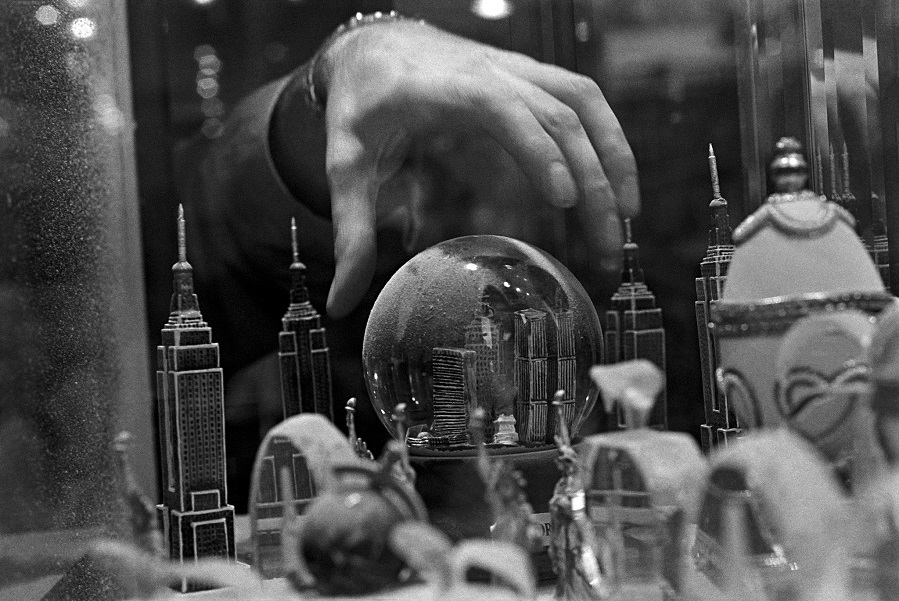On display at the George Eastman Museum, Eugene Richards’s raw and wrenching images are not for the faint of heart.
The Wall Street Journal
June 17, 2017
Richard B. Woodward
Looking at the photographs of Eugene Richards can induce a kind of disbelief. That the world should inflict so much pain on so many people, and that he would regard it as his life’s work to witness and capture it, can be hard to comprehend. And yet, for nearly 50 years, in numerous magazine essays and some 15 books, he has recorded the human capacity to withstand suffering and despair, using his cameras to extract moments of lyrical intensity from the direst circumstances.
“Eugene Richards: The Run-On of Time,” his untrendy and emotionally draining retrospective, which has just opened at the George Eastman Museum, contains nearly 150 prints and four short films of still images, on subjects as diverse as river blindness in Africa and the depopulation of rural America. In both their installation and the handsome catalog, co-curators Lisa Hostetler of the GEM and April
M. Watson of the Nelson-Atkins Museum of Art (to where the show will travel) have skillfully organized the 73-year-old’s oeuvre in an informal chronology that exposes its common themes. Mr. Richards’s identification with the damaged and luckless is one visible thread. Another is the magnetic grip of family and community.
The first of the three rooms begins in Boston, where he was born in 1944 and where, after college at Northeastern, he took graduate photography courses at MIT with the orphic Minor White. In 1967, to avoid being drafted during the Vietnam War, Mr. Richards joined Vista and was assigned to the Deep South. Angered by the grinding racism and poverty he saw there, he photographed the daily lives of African-Americans and co-founded an activist newspaper in Memphis, experiences assembled in his first book, “Few Comforts or Surprises: The Arkansas Delta” (1973).
On his return to Boston, he continued to report from the margins of American society. In 1973 he moved with his first wife, the writer Dorothea Lynch, to the largely white working-class neighborhood of Dorchester. His boisterous portraits of its residents led to the self-published “Dorchester Days” in 1978. That same year, after Lynch was diagnosed with breast cancer, he began to document (at her request) the progress of her treatment, until her death in 1983.
On the walls of the second and largest room here is a selection of the many projects he undertook between the 1980s and 2010s. These include the frantic and exhausting routine of emergency-room doctors in Denver; psychiatric patients confined to shabby hospitals in Ohio, Mexico and South America; addicts smoking crack or shooting up heroin in Brooklyn and Philadelphia; American families trying to mend after the death or maiming of a son or daughter in the wars since 2001; and impoverished communities that pockmark the U.S., from Appalachia to Arkansas.
Probably no living photographer combines so deeply the independent spirit and formal bravado of storied Life photographer W. Eugene Smith as Mr. Richards. Often shot with a wide-angle lens, his pictures tend to be eccentric, with canted horizons and multiple points of focus. The compositions are
rarely so ornate, though, that the emotional meaning is garbled.
A black-and-white photograph taken soon after Sept. 11, 2001, is typical. It shows the hand of a New York shopkeeper reaching into a display case of tourist knickknacks—among them a snow globe of the Twin Towers—covered with ash. Among his photographs documenting soldiers killed in Iraq or Afghanistan is one of a boy precariously standing in a fir tree to watch a graveyard funeral.
This second room also introduces his transition to color. A small group of his large landscapes from 2004-06, elegiac portraits of abandoned farms, are mounted on partitions as a more meditative space. Although photographers may have overdone the Romantic theme of the deserted home, Mr. Richards has met the challenge. His soft, multihued pictures of a snow-covered bed in an empty North Dakota room and the bleak view looking out from a glassed-in kitchen in Nebraska are among his finest.
His adherence to the constraints of the still photograph is unusual today. Three of his short films, playing on a loop here, are essentially slideshows, albeit with music and his voiceover.
The most wrenching of these describes his revisit with an African-American woman named Dorothy and her family in the Arkansas Delta. He had photographed her in the ’70s and her desperate situation then may be worse now. His self-critical remarks about her ambiguous reactions to his presence touch on issues that any intruding reporter must face, especially as “cultural appropriation” has become a flashpoint.
“There’s always, always people who don’t want you around,” he said in a recent newspaper interview. “You have to find some sympathetic way in, and then decide what your job is. It’s very seldom a pleasant process, you just grit your teeth and go.”
This is not an exhibition for the politically correct or aesthetically numb. Don’t expect to leave here dry-eyed.
Image credit: Eugene Richards (American, b. 1944). Snow globe of the city as it once was, New York, New York, 2001. Gelatin silver print. Collection of Eugene Richards. © Eugene Richards
